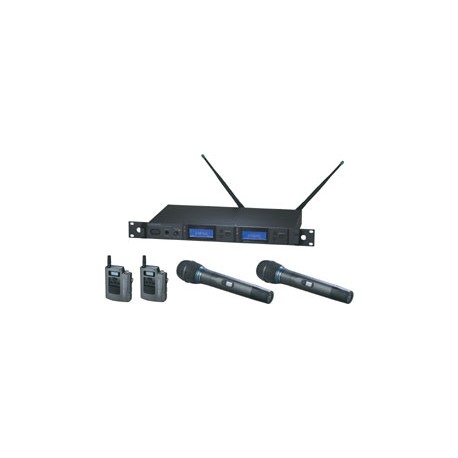
Microphones are used for a variety of applications in many different types of venues. Finding the right one can be a chore with so many options and factors to consider. AV Superstore has put together a quick guide to help customers learn about their options.
Types of Microphones
Condenser
This type of microphone has a capacitor capsule inside of it. The capacitor has a solid back plate and a diaphragm made of a thin, flexible material. This diaphragm vibrates when hit with sound waves, changing the distance between it and the solid back plate, which changes the capacitance. These microphones need a voltage to operate, which can be supplied by phantom power or a battery inside of the mic.
Condenser microphones have a greater frequency response and transient response, but are very sensitive to loud sounds. However, they are the microphone of choice for recording vocals in a quiet environment.
Dynamic
These microphones work by electromagnetic induction. There is a diaphragm with an induction coil attached on the inside of the mic. The coil is positioned within the magnetic field of a permanent magnet. When sound waves enter the mic, they make the diaphragm vibrate, which in turn causes the coil within the magnetic field to vibrate. This creates a varying current and turns the sound into electrical energy. The electrical signal created can then be amplified with a microphone pre-amp or mixing desk.
Dynamic microphones are more rugged in style than condenser microphones allowing them to be resistant to moisture and other accidents. This style of microphone also has less sensitivity to distant sounds and minimizes feedback, making them an excellent choice for use in live environments.
Wired vs. Wireless
Microphones can be wireless, or be powered through a cable (wired). Each has its own advantages and disadvantages, but the choice ultimately comes down to the application. Before deciding between the two, ask these questions:
- Is the performer/speaker going to be stationary or moving about?
If whoever is speaking will be stationary, a wired microphone with a stand will work just fine. However, many people like to move about while speaking, or must for their presentation. The cables of a wired microphone can make that difficult or hazardous. For more mobile speakers, a wireless microphone makes more sense.
- Is syncing the receiver and transmitter going to be difficult for wireless options?
While a sound engineer isn’t needed to use a wireless microphone, not everyone is adept at using them. They require a little more knowledge and set-up than their wired counterparts. If learning and remembering how to sync the transmitter and receiver will be an issue, a wired microphone might be a better fit.
- What type of microphone is needed?
Handheld microphones can be either wired or wireless. Other styles of microphones, such as lavalier and headset, are only wireless. So, the type of microphone needed can make the wired or wireless decision easy.
Styles of Microphones
Handheld
Able to be both wired or wireless, handheld microphones are used in a variety of applications. Presenters and lecturers can use them if they don’t mind having only one hand free. If they need both hands, they can set the microphone in a stand, but this limits their mobility.
Applications: Handheld microphones are great for seminars, lectures, and meetings.
Shotgun
Shotgun microphones need to be pointed directly at the speaker to adequately pick up the sound. They are generally set on the table in a fixed position facing whoever is speaking. Shotgun mics can also be used as a boom for broadcast and media productions.
Applications: Shotgun microphones are used most often in meetings and conferences or for broadcast.
Gooseneck
Gooseneck microphones are flexible, which allow the user to adjust it for the best audio possible. They are attached to a podium, installed in a table, or plugged into a microphone base.
Applications: Many meetings and conferences use this style of microphone.
Boundary Microphones
This style of microphone is positioned near or flush with a boundary or surface. It can be used to record whole room sound while barely being noticed.
Applications: This can be used for meetings or classrooms where an unobtrusive microphone is needed.
Lavalier
This wireless microphone has a transmitter in a body pack that can be clipped onto a belt or pocket of the speaker. The mic itself clips onto clothing, such as a collar. Lavalier mics give the speaker ultimate mobility during a presentation.
Applications: Broadcast, presentations, houses of worship, and teachers will reap the benefits of these mics.
Headset
Headset microphones clip behind the user’s ear and position the microphone close to their mouth. The transmitter is part of the ear clip.
Applications: These are ideal for workout instructors, theater actors, and anyone else who needs freedom to move.
AV Superstore has a large variety of wired and wireless microphones available. Talk with their audio experts for help finding the perfect microphone for any event or venue.


